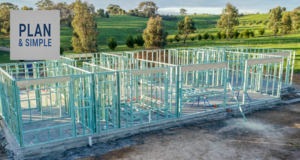
An instantaneous hot water system heats water on demand without a storage tank. When a tap is turned on, water passes through the unit and is heated instantly. This provides unlimited hot water without the recovery delays of a storage tank. These systems are usually compact and can be wall mounted inside or near the point of use.
Current regulations and safety standards
New hot water systems must comply with the National Construction Code 2022 and Australian Standards for heated water services. Instantaneous systems must meet temperature control, flow rate and insulation requirements.
Gas units must include safety features such as flame failure detection, gas leak detection, overheat protection and automatic shut‑off. Electric models must comply with electrical safety standards and be installed by a licensed electrician.
Why they suit renovations
Instantaneous systems are ideal for renovations that have limited space and require higher energy efficiency. They eliminate heat loss from stored water, reduce waiting times and fit neatly into smaller homes.
They also align with the shift toward electrification and sustainability. States like Victoria are phasing out gas in new builds, making electric instantaneous units increasingly popular in renovations and replacements.
Benefits and considerations
Benefits
- Compact size suits small homes and apartments
- Unlimited hot water on demand
- Lower running costs compared to traditional storage tanks when paired with solar or off‑peak electricity
- Long lifespan, often lasting up to 20 years for gas models
- Many include smart controls and precise temperature settings
Considerations
- Require minimum water flow and pressure to operate correctly
- Performance can be affected if multiple taps are used at once
- Professional installation by licensed trades is mandatory
- Upfront cost can be higher than small storage systems
Choosing the right system
Consider your household water usage, available energy source and space limitations. Smaller homes may only need a single electric or gas unit, while larger homes with multiple bathrooms may require higher flow rate models or multiple units installed in different locations.
Always check that the unit meets Australian safety standards and includes features suitable for your home’s plumbing and energy supply.
Installation tips for renovators
- Install the unit close to high‑use areas to reduce water wastage and heat loss
- Ensure compliance with NCC and Australian Standards for plumbing and electrical work
- Use licensed plumbers and electricians for installation and any required upgrades
- Check that water or gas pressure meets the unit’s activation requirements
- Choose models that can integrate with solar systems or take advantage of off‑peak tariffs





